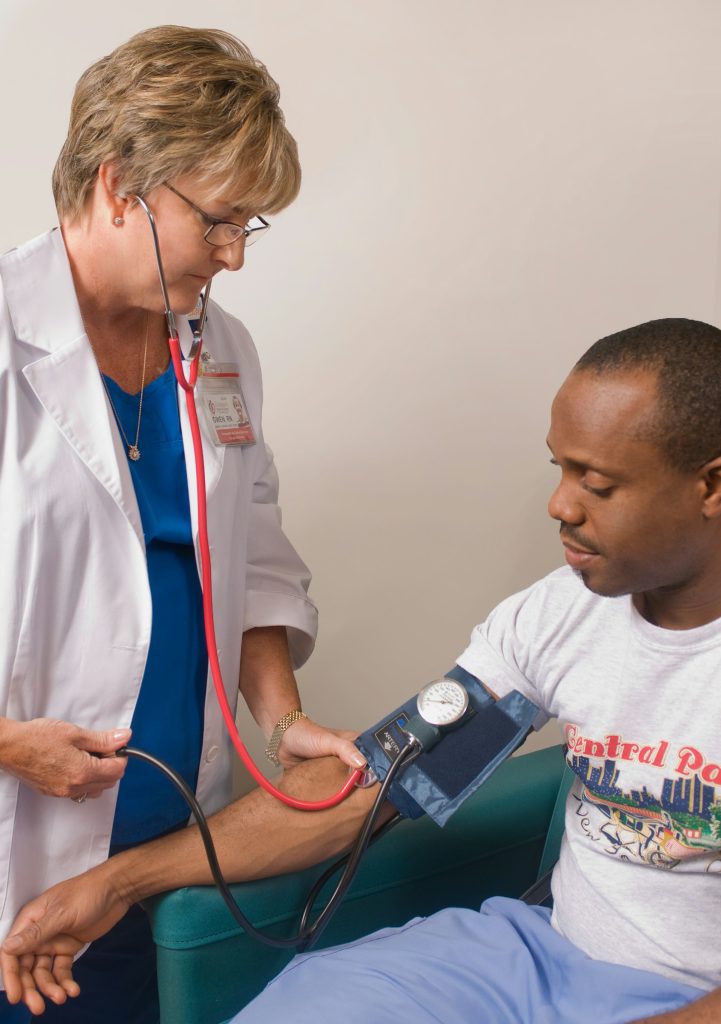A primary care physician is the backbone of American healthcare, even if they’re not the most glamorous part of it. They’re the doctors you see for your annual physical, when you’re sick with something mysterious, when your diabetes needs managing, or when you just need someone who knows your medical history to help you figure out what’s going on.
PCPs diagnose everyday conditions, manage chronic diseases, provide preventive care, coordinate with specialists, and serve as your long-term medical partner through different life stages. And right now, there aren’t nearly enough of them.
The U.S. faces a severe shortage of primary care physicians—a shortage that’s only expected to get worse as the population ages, existing doctors retire, and fewer medical students choose primary care over higher-paying specialties. This creates a real opportunity if you’re considering this path, but it also signals something about the challenges inherent in the field.
This article covers what primary care physicians actually do, what it takes to become one, what you can expect to earn, the lifestyle realities, and how to decide if this is the right medical career for you.
Read Also: Home Health Care Agency in the USA- Everything You Should Know
What Is a Primary Care Physician?
 A primary care physician is a doctor trained to provide comprehensive, ongoing medical care rather than highly specialized treatment. You’re the generalist, the first point of contact, the person who sees patients for everything from strep throat to complex chronic disease management.
A primary care physician is a doctor trained to provide comprehensive, ongoing medical care rather than highly specialized treatment. You’re the generalist, the first point of contact, the person who sees patients for everything from strep throat to complex chronic disease management.
Primary care breaks into three main board-certified categories, and the one you choose matters because it shapes your entire practice.
Family medicine physicians care for patients across the entire lifespan—newborns, children, adults, elderly patients. You’re delivering babies, managing grandma’s heart failure, treating a teenager’s acne, and diagnosing a middle-aged patient’s chest pain. The breadth is enormous. That variety appeals to some people. Others find it overwhelming to maintain competency across such a wide range.
Internal medicine physicians (internists) specialize in adult medicine, typically starting around age 18 and going up. You’re focused on adult disease—chronic conditions, complex medical problems, and managing multiple comorbidities in older patients. You don’t deal with pediatrics or obstetrics. Your practice tends to be more medically complex because adults, especially older adults, often have multiple chronic conditions that interact in complicated ways.
Pediatricians provide primary care for infants, children, and adolescents. You’re doing well-child checks, managing childhood illnesses, tracking development, giving vaccinations, and addressing parental concerns. The work involves a lot of reassurance and education for parents, and you’re often seeing patients who are fundamentally healthy but need monitoring and preventive care.
Some subspecialties function as primary care—geriatricians focusing on elderly patients, med-peds physicians who complete combined training to see both kids and adults, and adolescent medicine specialists. But the big three are family medicine, internal medicine, and pediatrics.
The path you choose affects your training, your patient population, your daily work, and your career satisfaction. We’ll dig into those differences more later.
Read Also: Medical Aid Prices in the USA
What Primary Care Physicians Actually Do
 Let’s get specific about what fills your days as a Primary Care Physician, because “comprehensive care” is vague.
Let’s get specific about what fills your days as a Primary Care Physician, because “comprehensive care” is vague.
You diagnose and treat common conditions.
A lot of your day involves figuring out what’s wrong with patients who come in feeling sick. Sore throat. Persistent cough. Abdominal pain. Dizziness. Rash. Back pain. Fatigue. You’re taking histories, doing physical exams, ordering appropriate tests, and making diagnoses. Much of this is straightforward—strep throat, urinary tract infection, viral illness—but some cases require careful clinical reasoning to distinguish serious problems from benign ones.
You manage chronic diseases.
This is a huge part of modern primary care. You’re seeing patients with diabetes, hypertension, high cholesterol, asthma, COPD, arthritis, depression, and anxiety. You’re adjusting medications, monitoring labs, tracking progress, addressing complications, and trying to keep chronic conditions under control so patients avoid hospitalizations and stay functional. This work is ongoing—you might see the same diabetic patient every three months for years, constantly adjusting their regimen based on their blood sugars, kidney function, and other factors.
You provide preventive care.
Annual physicals, health maintenance visits, vaccinations, cancer screenings (colonoscopy referrals, mammograms, skin checks), and lifestyle counseling about diet and exercise. A lot of primary care involves keeping healthy people healthy and catching problems early when they’re easier to treat.
You coordinate care.
When your patient needs a cardiologist, an orthopedist, a gastroenterologist, you’re making referrals, communicating findings, reviewing specialist recommendations, and making sure everything fits together. The American healthcare system is fragmented, and you’re often the only person with the complete picture of what’s happening with a patient across multiple specialists and settings.
You address mental health.
Primary care increasingly handles depression, anxiety, ADHD, and other common mental health conditions. Many patients seek help from their PCP first because there’s less stigma than going to a psychiatrist, or because they can’t access psychiatric care due to shortages or insurance limitations. You’re prescribing antidepressants, doing brief counseling, and managing conditions that used to be exclusively psychiatric territory.
You build long-term relationships.
This is one of the most rewarding aspects of primary care. You see patients over years or decades. You know their medical history, their family situation, their goals, and their fears. That continuity allows for better care because you understand context. You’re not just treating isolated problems—you’re caring for whole people over time.
But here’s what often doesn’t make it into the idealized descriptions: you’re also drowning in documentation, fighting with insurance companies about coverage, dealing with patient messages and refill requests, managing an overwhelming volume of test results and paperwork, and trying to address complex medical and social problems in 15-minute appointment slots that never feel like enough time.
Read Also: What You Need to Know About United Healthcare: Plans, Costs, and What Nobody Tells You
Work Settings—Where You’ll Actually Practice
Primary care physicians work in wildly different environments, and your work experience will vary dramatically based on where you land.
Private practices
solo or group—gives you more autonomy and control. You (or your group) make decisions about how to run things. But you’re also dealing with all the business aspects: billing, hiring staff, managing overhead, and dealing with payers. Some physicians love the independence. Others find the administrative burden overwhelming and would rather focus purely on medicine.
Hospital-owned outpatient clinics
These are increasingly common. You’re an employee of a health system, working in their clinic, seeing patients according to their model. You have less autonomy but also fewer business headaches. Your salary is predictable, you have administrative support, but you’re also subject to corporate productivity expectations and bureaucratic policies that sometimes conflict with good patient care.
Community health centers
They serve underserved populations, often with sliding-scale fees and significant Medicaid patient populations. The work is mission-driven and meaningful, but resources can be limited, patient complexity is often high due to social determinants of health, and burnout risk is real.
Academic medical centers
They combine clinical practice with teaching residents and medical students. You’re seeing patients while also educating the next generation. Some people love the intellectual stimulation and connection to academia. Others find the teaching responsibilities and slower pace frustrating.
Concierge and direct primary care
Concierge and direct primary care practices charge patients membership fees (often $1,500-$3,000+ annually) in exchange for enhanced access, longer appointments, and a dramatically smaller patient panel. You might have 300-600 patients instead of 2,000-3,000. This allows more time per patient and reduces burnout, but it also means you’re serving primarily affluent patients who can afford the fees, which bothers some physicians ethically.
Telehealth practices
They are either hybrid or entirely virtual—have exploded recently. You’re doing visits by video, which offers flexibility and eliminates commuting, but can feel less satisfying since you can’t do physical exams and the connection feels less personal.
Urgent care centers
They provide episodic care rather than continuity. You’re seeing patients you’ll probably never see again, diagnosing acute problems, doing some minor procedures, and sending people home or referring them to their regular doctor or the ER. It’s shift work without the long-term relationships that define traditional primary care.
The setting you choose shapes everything about your experience—your autonomy, your income, your schedule, your patient population, and your job satisfaction. There’s no universally “best” setting, but there are settings that fit different personalities and priorities better.
Read Also: Health Equity in the USA: What It Really Means and Why We’re Failing at It
Salary—What You’ll Actually Make
 Let’s talk money, because physician compensation is complicated and medical school debt makes these numbers matter.
Let’s talk money, because physician compensation is complicated and medical school debt makes these numbers matter.
Average annual salary ranges for a Primary Care Physician
The average yearly salary for primary care physicians looks something like this:
- Family medicine: $210,000 to $260,000
- Internal medicine (primary care): $230,000 to $280,000
- Pediatrics: $190,000 to $240,000
These are national averages. Geographic location matters enormously—you’ll make more in expensive urban markets or underserved rural areas desperate for doctors, and less in saturated markets or lower cost-of-living regions.
Concierge and direct primary care salaries are all over the map. Small DPC practices might net the physician $150,000 while they’re building their panel. Established concierge practices in affluent areas can pay $350,000+. It depends entirely on the business model and patient volume.
Rural and underserved areas often offer the highest compensation because they’re desperate for physicians. You might see offers of $280,000+ with loan repayment and signing bonuses in small towns that can’t attract doctors.
Compensation models for a Primary Care Physician
This varies. You might be paid a straight salary. You might have a base salary plus productivity bonuses based on RVUs (relative value units—basically a measure of how much work you’re doing). Also, you might be in a partnership with profit-sharing. You might operate on capitation, where you’re paid a set amount per patient you’re responsible for. In concierge or DPC models, you’re living off patient membership fees.
The productivity-based models create tension. You’re being paid to see more patients, document more thoroughly, and do more procedures. That incentivizes volume over quality, which conflicts with the kind of careful, thorough care most physicians want to provide. Many PCPs feel this pressure acutely—you know your patient needs more than 15 minutes, but six more patients are waiting, and your productivity will suffer if you fall behind.
Financial incentives for a Primary Care Physician
Financial incentives beyond base salary can be substantial. Signing bonuses of $10,000 to $50,000+ are common, especially in competitive markets or underserved areas. Loan repayment programs—through federal, state, or employer programs—can provide $50,000 to $100,000+ to work in underserved areas. That’s real money if you’re carrying $200,000-$400,000 in medical school debt.
Here’s the reality many medical students grapple with: primary care pays significantly less than most other physician specialties. Orthopedic surgeons average $550,000+. Cardiologists make $450,000+. Anesthesiologists clear $400,000+. As a primary care doc making $240,000, you’re earning good money by societal standards but less than many of your medical school classmates who chose other specialties.
When you’re carrying $300,000 in student loans, that pay gap matters. You can live comfortably on a primary care salary, but you’re paying off debt longer and building wealth more slowly than your peers in procedural specialties. This financial reality is part of why medical students increasingly avoid primary care despite the shortage, creating a vicious cycle.
Read Also: Public Health Jobs in the USA (2025 Guide)
Job Outlook—Where Things Stand
The outlook for primary care physicians is exceptionally strong, though that’s partly because the field is in crisis.
There’s a nationwide shortage of PCPs that’s projected to worsen dramatically. The Association of American Medical Colleges estimates a shortage of 17,800 to 48,000 primary care physicians by 2034. That’s a massive gap.
Why? Multiple factors. The aging population needs more chronic disease management. Existing primary care physicians are retiring. Medical students choose higher-paying specialties. Insurance reimbursement for primary care has historically been low, making it less attractive financially. Administrative burden drives burnout, pushing doctors out of practice.
From a job-seeking perspective, this is good news. You will have your choice of positions. You will have negotiating power. Employers will compete for you. Job security is about as solid as it gets in medicine.
But the shortage also signals underlying problems. The system is struggling to make primary care sustainable and satisfying enough that physicians choose it and stay in it. You’re entering a field where demand is desperate but working conditions are often challenging.
Value-based care models—where physicians are paid for quality outcomes rather than pure volume—are growing and theoretically should benefit primary care. The rise of telehealth creates scheduling flexibility. Team-based care models with nurse practitioners, physician assistants, and care coordinators can reduce physician workload.
These trends offer hope for improvement, but they’re not universal yet. Many PCPs still work in traditional high-volume models that feel overwhelming.
Read Also: How to Prepare For Job Interview When Changing Careers in US
How to Actually Become a Primary Care Physician
The path is long and expensive. Let’s be honest about that upfront.
Earn a bachelor’s degree—four years.
You need to complete pre-med requirements (biology, chemistry, physics, organic chemistry, sometimes biochemistry, and psychology). Your major doesn’t matter as long as you complete those prerequisites and maintain a strong GPA. Many successful medical school applicants majored in humanities or social sciences, not just STEM fields.
Take the MCAT.
The Medical College Admission Test is required for medical school admission. It’s a lengthy, challenging exam testing science knowledge, critical thinking, and reasoning. Competitive scores vary by school, but generally, you want 510+ out of 528 to be competitive for most programs.
Attend medical school
This is four years of earning either an MD or DO degree. The first two years are mostly classroom and lab work covering foundational science. The second two years are clinical rotations where you spend time in different specialties learning medicine hands-on. You’re working long hours, studying constantly, and accumulating massive debt. The average medical school graduate carries over $200,000 in student loans, and many exceed $300,000-$400,000 when you include undergraduate debt and interest.
Complete residency training
This is for three years for family medicine, internal medicine, or pediatrics. Four years if you do combined med-peds training. Residency is where you actually learn to practice medicine. You’re working 60-80-hour weeks, taking overnight call, managing patients with attending supervision, and gradually taking on more responsibility. The hours are brutal and the pay is minimal—roughly $60,000-$70,000 per year despite working far more than 40 hours per week. But this is where you develop clinical competence.
Obtain board certification.
After residency, you take board exams in your specialty. Most employers expect board certification, and it’s required for hospital privileges in many institutions.
Get state medical licensure.
Each state has its own licensing process. You’ll apply, submit documentation, pass background checks, and fulfill specific state requirements. Maintaining licensure requires ongoing continuing medical education.
Optional fellowships
This exists if you want additional specialization within primary care—geriatrics, sports medicine, addiction medicine, hospice and palliative care, and adolescent medicine. These add 1-2 years of training but can open specific career paths.
From the start of college to practicing independently, you’re looking at 11-13 years of training. That’s a massive time commitment, and throughout most of it, you’re either paying for education or earning minimal residency wages while working exhausting hours.
Read Also: Remote Nursing Jobs in the USA
Being a Primary Care Physician: The Skills That Actually Matter
Clinical knowledge is crucial, obviously. But succeeding as a PCP requires a broader skill set that doesn’t always get emphasized in medical training.
Communication skills matter as much as diagnostic ability. You need to explain complex medical information clearly to patients with varying health literacy. You need to listen well enough to understand not just symptoms but context—what’s happening in their life, what their concerns really are, what barriers might prevent them from following treatment plans.
Time management and prioritization are essential. You’ve got 15 minutes with a patient who has five problems. You need to figure out what’s urgent, what can wait, what needs specialist referral, and what you can handle—all while documenting everything and staying on schedule.
Empathy and emotional resilience help you stay connected to patients without burning out. You’re dealing with suffering, fear, frustration, and sometimes death. You care about people while maintaining enough professional distance that their pain doesn’t destroy you.
Systems thinking helps you navigate the healthcare system’s complexity. You’re coordinating care across specialists, understanding insurance coverage, identifying community resources, and making sure patients actually get the care they need despite all the barriers.
Comfort with uncertainty is necessary because you won’t always have clear answers. A lot of primary care involves managing ambiguity, making decisions with incomplete information, and tolerating the discomfort of not knowing for sure what’s going on.
Cultural competence allows you to care effectively for diverse populations with different health beliefs, languages, and social circumstances.
The work is as much about relationships and communication as it is about medical knowledge. If you’re deeply introverted, hate small talk, or lack patience for explaining things repeatedly, primary care might frustrate you even if you’re clinically brilliant.
Read Also: Physical Therapy Assistant Jobs in the USA
Lifestyle and Workload—What Your Life Will Look Like
Primary care offers better work-life balance than many specialties, but that’s relative. You’re still working hard.
Most primary care jobs follow full-time outpatient schedules
This is typically Monday through Friday, 8 AM to 5 PM or similar. You’re not doing overnight hospital shifts. You’re not on call every third night. Compared to surgery, emergency medicine, or obstetrics, your schedule is far more predictable.
But “predictable” doesn’t mean easy. You’re seeing 16-24 patients per day on average, depending on your practice model and employer expectations. Each visit involves reviewing the chart beforehand, conducting the visit, documenting thoroughly in the electronic medical record, ordering tests, making referrals, and handling follow-up.
Then there’s all the work that happens outside scheduled visits. Patient messages through the patient portal. Prescription refill requests. Lab results to review and communicate. Insurance prior authorizations to complete. Care coordination with specialists. This “pajama time” work—so called because many physicians do it at night after their kids go to bed—can add 1-3 hours per day of unpaid work.
The EMR documentation burden is crushing. You’re clicking through screens, filling in templates, and meeting documentation requirements for billing and compliance. Studies show primary care physicians spend 1-2 hours on EMR work for every hour of direct patient time. That ratio feels terrible—you went into medicine to care for people, not to document things for insurance companies.
Burnout is a real problem to a primary care physician
This occurs despite the relatively reasonable schedule. The combination of high patient volume, administrative burden, time pressure, insurance frustrations, and the weight of responsibility wears people down. You feel like you’re on a treadmill—see patient after patient, document everything, put out fires, go home exhausted, and do it again tomorrow.
Some practice models address this better than others. Concierge and direct primary care dramatically reduce patient volume, giving you more time per patient. Team-based care models delegate tasks to nurses, medical assistants, care coordinators, and social workers, taking some burden off physicians. Practices that limit patient panels and panel size create more manageable workloads.
But traditional insurance-based primary care often still operates on a high-volume model where you’re expected to see 20+ patients per day, keep up with all the administrative tasks, and somehow provide comprehensive, thoughtful care. Many physicians find math impossible.
Read Also: What Is the Best HealthCare Service in the UK?
The Honest Pros and Cons of Being a Primary Care Physician
The pros are real and meaningful.
Demand is enormous, and job security is solid. You will have your choice of positions and locations. That’s rare in any field.
The scope of practice is broad and intellectually engaging. You’re not doing the same thing over and over. You see variety—different conditions, different patients, different problems.
Patient relationships are deeply rewarding. You build long-term connections, watch patients’ lives unfold, celebrate successes, and support them through hard times. That continuity is something many specialists never experience.
Work schedules are relatively predictable compared to many specialties. You can plan your life, attend your kids’ events, and have hobbies. It’s not perfect, but it’s better than being a surgeon on call every other night.
There are multiple career paths and practice models. If one setting doesn’t work for you, you can transition to another—move from a health system to private practice, switch to concierge medicine, do telemedicine, pursue leadership or teaching roles.
But the cons are significant and affect daily satisfaction.
The administrative burden is oppressive. Documentation, prior authorizations, insurance hassles, and inbox management—this work is tedious, time-consuming, and takes you away from actual patient care. Many PCPs spend more time on paperwork than with patients, which feels soul-crushing.
Compensation is lower than in most other specialties. When you’re carrying massive debt and watching classmates in other specialties make $200,000 more per year, that gap stings.
Volume pressure creates constant time stress. You know your patients need more time than you have. You’re rushing through visits, cutting conversations short, leaving things unaddressed because you have to stay on schedule.
The healthcare system is fragmented and frustrating. You’re trying to coordinate care across multiple specialists and settings, fighting with insurance companies about coverage, and navigating administrative barriers that delay or prevent good care. It feels like you’re constantly fighting the system rather than being supported by it.
Burnout and moral injury are common. Moral injury is when you’re prevented from providing the care you know patients need—you don’t have time, insurance won’t cover it, the system creates barriers. Over time, that disconnect between your values and your reality damages your well-being.
Patient complexity keeps increasing while time per patient keeps decreasing. Patients are older, sicker, on more medications, and with more social challenges. Yet appointment times aren’t growing to match that complexity.
Read Also: Best Jobs: How To Make $80,000 a Year Working From Home
Primary Care Physician: Choosing Between Family Medicine, Internal Medicine, and Pediatrics
If you’re committed to primary care, you still need to choose which type. This decision shapes your training and career.
Family medicine
This offers the broadest scope. You can deliver babies, manage a nursing home, see kids and adults, do minor procedures. That variety appeals to people who love being generalists and don’t want to narrow their focus. The trade-off is that maintaining competency across the entire lifespan and all age groups is demanding. You need to stay current on pediatric vaccines, adult chronic disease, obstetrical care, and geriatric syndromes—it’s a lot.
Family medicine residencies often place you in community settings and rural areas. If you want to practice in underserved communities, family medicine prepares you well for that role.
Internal medicine
This focuses entirely on adults, usually 18 and up. You develop deep expertise in adult medicine—complex chronic disease, managing multiple comorbidities, hospital medicine if you want it (though most primary care internists stay outpatient). Your patients tend to be medically complex, which is intellectually stimulating but also means longer visits and more challenging management.
Internal medicine also provides an easier path to subspecialty fellowships if you decide primary care isn’t for you—cardiology, gastroenterology, and pulmonology all flow from internal medicine residency. That flexibility appeals to people who aren’t 100% sure about primary care.
Pediatrics
This is for people who genuinely love working with children and families. Much of your work is preventive—well-child checks, development monitoring, vaccines, and parental education. You do manage sick kids, but the patient population skews toward healthy compared to adult medicine.
Pediatrics requires a specific personality. You need patience for crying babies and squirming toddlers, you need to communicate effectively with anxious parents, and you need to be okay with the fact that your actual patient (the child) often can’t articulate what’s wrong.
Pediatrics pays less than family or internal medicine on average, which is worth considering given medical school debt.
Think about what drew you to medicine in the first place. Do you love working with kids? Choose pediatrics. Do you want to care for entire families across generations? Family medicine. Do you want to focus on complex adult medical problems? Internal medicine.
Also consider lifestyle. Family medicine residency involves obstetrics rotations and potentially night deliveries. Internal medicine often includes inpatient rotations with hospital call. Pediatrics involves well-child checks and anxious parent phone calls. None is inherently better, but they require different skill sets and temperaments.
Read Also: Staffing Agencies in the USA: A Practical Guide for 2025
Is Being a Primary Care Physician Right for You?
Before you commit to this path, really think about whether it fits who you are and what you value.
Primary care makes sense if:
You genuinely enjoy ongoing relationships with patients. The continuity is the heart of primary care. If you prefer episodic encounters or procedural work, primary care will feel frustrating.
You’re intellectually curious about a broad range of medicine. You’ll never be the world expert in any one thing, but you’ll know something about everything. That appeals to generalists and bothers people who want deep specialization.
You value work-life balance and predictable schedules. Primary care offers a better lifestyle than most specialties, which matters if you have family commitments or outside interests.
You want job security and geographic flexibility. You can work anywhere in the country. Demand is strong everywhere.
You can tolerate administrative hassles and system frustrations. If bureaucracy and documentation make you want to scream, primary care will test you—though honestly, all of medicine has an administrative burden now.
You’re okay with modest (by physician standards) compensation. $250,000 is good money, but it’s significantly less than many specialties earn.
Primary care probably isn’t the best fit if:
You’re deeply motivated by money and want to maximize income. The pay gap is real and substantial compared to procedural specialties.
You hate outpatient work and prefer hospital or procedural medicine. Primary care is mostly outpatient these days.
You want clear diagnostic challenges with definitive answers. Primary care involves a lot of ambiguity and chronic disease management rather than dramatic diagnoses and cures.
You’re extremely introverted and find constant patient interaction draining. You’ll be talking to people all day, every day.
You need to work to feel urgent and high-stakes. Primary care has its moments, but much of it is routine management. If you crave the adrenaline of emergency medicine or critical care, primary care might bore you.
Read Also: Diagnostic Medical Sonographer Jobs in the USA
Finding a Primary Care Physician Job
When you’re ready to look for positions as a primary care physician, the process is fairly straightforward.
Identify what setting fits you. Private practice, hospital-employed clinic, community health center, concierge, telehealth, and academic—each offers different trade-offs in autonomy, compensation, patient population, and work structure. Know what you want.
Use physician recruiting platforms. Health system job boards, physician recruiting firms, and national organizations like AAFP (American Academy of Family Physicians) or ACP (American College of Physicians) have job listings. Network through residency connections, mentors, and colleagues.
Get licensed in your target state early. Medical licensing takes months. Start the process before you finish residency so you can start working immediately.
Negotiate your contract carefully. Review base salary, productivity expectations, bonus structure, benefits, loan repayment, signing bonuses, call obligations, non-compete clauses, and malpractice coverage. Many physicians hire contract attorneys to review offers because employment agreements are complex and consequences last for years.
Ask specific questions during interviews: How many patients per day? How much clinic time vs. administrative time? What’s the patient panel size? What administrative support exists? How are patient messages handled? What EMR system? These details matter enormously for your daily experience.
Visit the practice if possible. Talk to current physicians. Try to get a sense of the culture, the workload expectations, and whether you’d be happy there. Red flags include high physician turnover, vague answers about workload, or administrators who seem more focused on productivity metrics than patient care.
Read Also: Physician Associate in the UK (2025/2026): Registration, Jobs, Pay, and Visa Options
Primary Care Physician: The Bottom Line
A primary care physician is essential to a functioning healthcare system. The work involves comprehensive, relationship-based care that touches people’s lives meaningfully over time. Job security is excellent, schedules are relatively predictable, and the scope of practice is broad.
But the field faces real challenges—administrative burden, volume pressure, inadequate compensation relative to other specialties, burnout risk, and system frustrations that make good care harder than it should be. These aren’t abstract concerns. They affect your daily experience and long-term satisfaction.
If you go into primary care, do it with open eyes. Understand the trade-offs. The work can be deeply fulfilling, but it won’t make you wealthy, and it will test your resilience against bureaucracy and time pressure. Find a practice model that aligns with your values—whether that’s traditional insurance-based medicine, concierge care, community health, or something else.
Also, remember that choosing primary care doesn’t lock you in forever. Many physicians start in primary care and transition into other roles—hospital medicine, urgent care, administration, public health, teaching, or even different specialties through additional training. Your career can evolve as your interests and circumstances change.
The shortage of primary care physicians is real and worsening. Society desperately needs good primary care doctors. If you’re drawn to this work, you’ll have opportunities and you’ll make a genuine difference in people’s lives. Just make sure you understand what you’re choosing and structure your career in ways that protect your wellbeing so you can sustain this work long-term. Because the last thing the field needs is more burned-out doctors leaving primary care after a few years, deepening the shortage even further.





